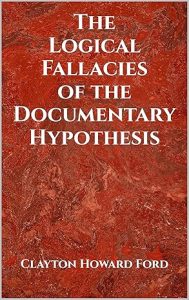Lesson 10
8. The Resurrection of Christ
The doctrine of the resurrection of Christ is absolutely paramount to the Christian faith. In fact, Paul says that if the resurrection did not happen, then our faith is futile (1 Cor. 15:17). In other words, if there is no resurrection, there is no Christianity.
We know that the resurrection happened because his disciples testified to seeing him after his crucifixion. All four Gospels record the resurrection. Luke gives the most details (Luke 24:1-12, 36-48).
Christ did not rise from the dead as just a spirit (like the Jehovah’s Witnesses contend) but as a full person: spirit, soul, and body.
In fact, Jesus said that he would raise his own body (John 2:18-21). Christ’s resurrection was a physical resurrection.
In 1 Cor. 15:1-8, Paul says that the Gospel consists of three events.
First, Christ died. John’s account of Jesus’ death includes the detail that blood and water came out of Jesus’ body after a soldier pierced his side with a spear (John 19:34). This proves that Jesus died when his heart ruptured. This also proves that Jesus really died (not just passed out), for no one survives a ruptured heart.
Second, Christ was buried. Following the customs of the time, he was placed in a cave, the opening of which was then covered by a large stone. Given the necessary size of the opening and the kind of material in that area, the stone probably weighed 1.5 to 2 tons. This means that if Jesus had been buried alive (and if he were a mere man), he would not have been able to move the stone by himself.
Third, Christ rose again on the third day.
Paul then cites the testimony of witnesses to prove that the resurrection did occur. How reliable were these witnesses?
First, in their written testimony, they pointed out their failures, including their unbelief. If they had made up the story of the resurrection, they would have made themselves look good.
Second, most of them died for their testimony. They were told they could live if they simply stopped proclaiming the resurrection of Christ. But they chose to die anyway because they knew they were telling the truth. People do not willingly die for a story which they made up.
Third, their testimony was confirmed by other witnesses, both friendly and hostile. Paul says that 500 people saw the risen Christ at the same time. This proves that the disciples were not hallucinating, for no two people have the same hallucination, let alone 500. The hostile witnesses include the priests, who bribed the guards into saying that the disciples had stolen the body. In other words, even the hostile witnesses admitted that the grave was now empty!
Fourth, and perhaps the best reason for believing the reliability of the disciples’ testimony, is that they first preached the resurrection in Jerusalem. They made their first public announcement of the resurrection within walking distance of the tomb itself. Anybody in the audience could have gone to the tomb to check it out for themselves. If the disciples had started preaching in Athens or Rome, no one could have verified it. But they began in Jerusalem because they knew that no one could prove them wrong.
All the enemies of Christianity had to do to stop it in its tracks when the disciples began to preach the resurrection was to produce the body. The fact that they never did is proof that the body was no longer in the grave.
The resurrection of Christ is the central belief of Christianity. We know that Christianity is correct because we know that Christ rose from the grave.








